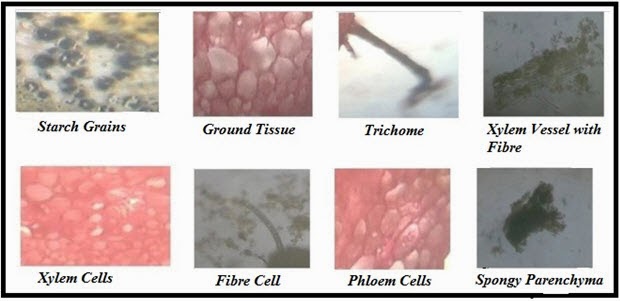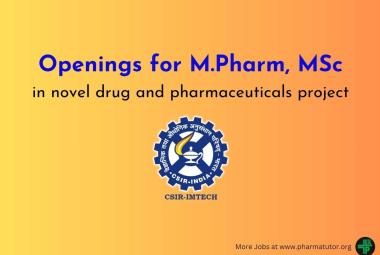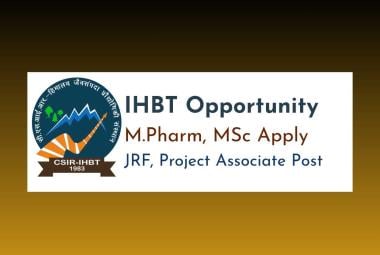{ DOWNLOAD AS PDF }
ABOUT AUTHORS:
Shikha Jain*, Kirti Jatwa, Vikas Jain, Avnish Sharma, S.C. Mahajan
Department of Pharmaceutics,
Mahakal Institute of Pharmaceutical Studies,
Ujjain, Madhya Pradesh, India.
*jain.shikhapharma@gmail.com
ABSTRACT
The demand of herbal products is now increasing tremendously in whole across the World especially in India. Elaeocarpus sphaericus (rudraksha), belonging to the family Elaeocarpeaceae is popular in indigenous system of medicine including Ayurveda, Siddha and Unani. Traditionally rudraksha is used for the treatment of various diseases like stress, anxiety, depression, palpitation, nerve pain, and epilepsy, and migraine, lack of concentration, asthma, hypertension, arthritis and liver diseases. Phytochemical study of rudraksha reveals that it contains indolizidine type of Alkaloids. Aqueous extract of leaves contains glycosides also. It also contains minerals, vitamins, steroids,flavanoids. Ethanolic extract of leaves contains gallic acid, ellagic acid & quercetin. This plant has also been proved to be a very good centre for researches for scientists. In the field of research, rudraksha has been found to possess various biological activities like anti-hypertensive, anti-depressant, anti-inflammatory, anti-microbial, analgesic, anti-diabetic and antioxidant activity. In view of its wide pharmacological and biological activities, it seems to behaving a great therapeutic potential. The present review aims to present current knowledge of major phyto-constituents, clinical studies with major emphasis on traditional and pharmacological activities.
INTRODUCTION:
Rudraksha is a dried herbal fruit. Rudraksha’s motherland or birth place is mountains of Himalayas. Rudrakshas are considered to be sacred and have many spiritual and medicinal values both as preventive and curative. Rudraksha is the King of herbal medicine working effectively and positively both as preventive and curative. Elaeocarpus sphaericus (syn. Elaeocarpus ganitrus) commonly known as rudraksha in sanskrit and rudraki in hindi is grown in Assam and Himalayan region of India for its attractive fruit stones and medicinal properties [1] . It is used in folk medicine in treatment of stress, anxiety, depression, palpitation, nerve pain, epilepsy, migraine, lack of concentration, asthma, hypertension, arthritis and liver diseases. According to the ayurvedic medicinal system, wearing of rudraksha can have a positive effect on heart and nerves. [2,3,4]
Story of origin of Rudraksha:
All of you must have seen Rudraksha or heard something about Rudraksha. Some of you might have even worn it. Let us try to know something about Rudraksha. Wearing a Rudraksha is considered very auspicious. Rudraksha is a combination of two words, Rudra which means lord Shiva and Aksha meaning eyes.
According to ancient scriptures and legends, lord Shiva wanted to kill demon named Tripur to free the Devas from him. In order to defeat him, Lord Shiva needed a weapon named Kalagni. Lord Shiva kept his eyes closed for many years to acquire this weapon. When he opened his eyes, drops of tears fell on the surface of the Earth. These drops created Maharudraksha.
Twelve types of rudraksha came from the sun-eye of Shiva, 16 from the moon-eye and 10 from the fire- eye. The first ones were blood-coloured, the second white and third black. [5]
Definition and meaning of the word Rudraksha:
The word rudraksha is derived from two words - rudra and aksha.
1. Aksha means eye. Rudra and aksha means the one who is capable of looking at and doing everything (for example, the third eye). Aksha also means axis. Since the eye can rotate on one axis, it too is known as aksha.
2. Rudra means the one who weeps. A means to receive and ksha means to give. Hence, aksha denotes the ability to receive or give. Rudraksha is the one that has the ability to wipe our tears and provide happiness. [6]
Botanical Representation of Rudraksha: [7]
Botanical Name : Elaecarpus Ganitrus Roxb.
Kingdom: Plantae
Division : Magnoliophyta
Class : Magnolipsida
Family : Eleocarpaceae
Genus : Elaeocarpu
Common Names of Rudraksha:
Eleocarpus: Eleocarpus is a Greek word formed by the combination of Elaei and Carpus. In Greek, Elaei means 'wild olive' tree and Carpus means 'fruit' therefore the seed of fruit from wild olive like trees is known as Elaeocarpus.In India Rudraksha is spelt differently in different languages. (Table 1)
Table 1 : Common Names of Rudraksha”
|
Common Names of Rudraksha |
|
Sanskrit, Hindi & Marathi: Rudraksha |
|
Bengali: Rudrakaya |
|
Kannada: Rudrakshi |
|
Tamil: Akkamrudrakai |
|
Telugu: Rudraksha Halu |
|
English: Woodenbegar |
Geographical Sources of Rudraksha tree:
Elaeocarpus sphaericus commonly known as rudraksha is a large evergreen broad leaved tree found in tropical and subtropical areas at the attitude ranging from seacoast to 2,000 meters above the sea level [8].The Elaeocarpus consists of about 12 genera and 350 species of trees and shrubs and are distributed in the tropical and subtropical regions but mainly it has about 36 sister species including rudraksha[9,10].
The Rudraksha tree inhabits areas starting from Manila, Philippines and passing through Myanmar to entire North-East India, Bangladesh, Nepal and Bhutan. However, in present era, the Rudraksha tree is localized only in Eastern Nepal due to suitable climatic conditions.
Around 70% of the Rudraksha trees are found in Indonesia, 25% in Nepal and 5% in India. Considered a major stress reliever, reducing circulatory problems and of course as the best beads, the berry (Elaeocarpus Ganitrus) was first spotted in Indonesia and is now grown in Nepal and Hardware. The tree is considered as a threatened plant in north eastern region of India.
Cultivation of Rudraksha Trees: [11]
Rudraksha farming is a difficult process due to the slow sprouting from the beads. Depending on the humidity of the soil, it usually takes 1-2 years for a tree to sprout. Rudraksha is grown in subtropical climatic regions with temperature ranges of 25-30 degree centigrade. The tree starts giving fruit after 7 years. The flowers of Rudraksha appear in April-May. The fruits of Rudraksha appear in June and ripen by August & October. The environment and location of Rudraksha trees plays a major role in the bead formation and the type of bead formed. e.g: The Himalayan beads seem larger, heavier and more powerful due to the environment they grow in. A single Rudraksha tree bears beads in all different faces or mukhis at the same time. Most common Rudraksha bead is the five faceted or panchmukhi.
Elaeocarpus trees are planted for ornamental purposes as bunches of blue fruits all over the tree give a very scenic look.
Description of Rudraksha tree: [12,13]
· Rudraksha is a large, evergreen broad-leaved tree found in tropical and sub-tropical areas at the altitudes ranging from seacoast to 2,000 meters above the sea level. The tree is a perennial i.e. grows throughout the year. The Tree of Rudraksha is about 50-200 feet high. It may be 14.60 meters to 29.20 meters tall depending on the area and the climate. The diameter of trunk is up to 1.22 meter.
· The leaves of rudraksha tree are shining green on the upper side with a dull leathery on the dorsal side. The leaves are ovate with tithed edges. Size - length: 5-6 inch, Width: 2 inch.
· The main trunk of rudraksha tree is cylindrical with a grayish white& rough textured bark. The bark is grayish white.
· The fruits of Rudraksha are globular in shape. The bead present inside is hard and tubercle. Fruits are 1cm. in diameter, deep blue or mealy when ripe. The fruit pulp is sour in taste. The fruit includes five or six carpels, each carpel having a single large seed. The seed is elliptical consisting of a membranous seed coat.
· The flowers of Rudraksha are white with fringed petals with Diameter of ½ inch.
Physico-chemical properties of leaves: [14]
Loss on drying : 8.55 ± 0.45 % w/w
Water soluble extractive : 12 ± 1.05 % w/w
Alcohol soluble extractive : 16 ± 0.90 % w/w
Foreign matter : 0.04 % w/w
Total Ash : 2.7 ±0.98 % w/w
Water soluble ash : 1.6 % w/w
Acid insoluble ash : 1.9 ± 0.56 % w/w
Sulphate ash : 0.7 ± 0.04 % w/w
Microscopy Of Rudraksha [15 ]:
Both section and powder characters are discussed here:-
In sectional view, the seed are elliptical and consisted of a membranous seed coat. There is a prominent funicle at one end of the seed. The seed coat enclosed a dense cellular endosperm.
The endosperm cells are in parallel compact rows. They extend from periphery to the centre; the cells are squarish and thin walled. The cells towards the periphery are smaller and they become gradually larger towards the centre of the seed. Cell inclusions: - The endosperm cells have large calcium oxalate druses or sphaerocrystals. The crystals are either one or two per cell. They are random in distribution. The druses are 10 μm in diameter.
The transverse section of leaf is divided into three regions of epidermis, mesophyll and vascular bundle. The epidermis is found in both upper and lower surface. It is single layered, compactly arranged parenchyma cells covered externally with a cuticle. Trichomes are present.
Mesophyll is present in between the two epidermal layers (Upper & Lower). It comprises of palisade cells which were made up of two layers of elongated, compactly arranged chlorenchyma. A few vascular strands, prisms of calcium oxalate are also present in the mesophyll.
The epidermal layers are continuous over the midrib region. 2-3 layers of collenchyma cells are present below the upper epidermis and above the lower epidermis. Bulk of the midrib region is made up of oval parenchyma cells which are arranged without intercellular spaces. 3-9 vascular bundles are present in the centre of the midrib region.
The stomata are in large no. in leaf. They were present in lower epidermis. The type of stomata is paracytic. Trichomes are the elongated or glandular outgrowth of the epidermal cell. The type of trichome found is unicellular. Non-lignified trichomes are seen. Only covering trichomes are present.
Powder microscopy of the fruit sclerotesta: -The stony endocarp or sclerotesta consists of only sclereids. No other cell types or cell inclusions are evident in the powder. The sclereids may be short or elongated. The short sclereids are isodiametric. The sclereid walls are highly lignified. The cells have wide lumen with brownish content.

Figure 1 – Microscopy of Rudraksha
Types of Rudraksha:- Table 2
“Table 2 : Types of Rudraksha”
|
Types of Rudraksha |
|
One Mukhi: |
|
Two Mukhi: |
|
Three Mukhi: |
|
Four Mukhi: |
|
Five Mukhi: |
|
Six Mukhi: |
|
Seven Mukhi: |
|
Eight Mukhi: |
|
Nine Mukhi: |
|
Ten Mukhi: |
|
Eleven Mukhi: |
|
Twelve Mukhi: |
|
Thirteen Mukhi: |
|
Fourteen Mukhi: |
|
Fifteen Mukhi: |
|
Sixteen Mukhi: |
|
Seventeen Mukhi: |
|
Eighteen Mukhi: |
|
Nineteen Mukhi: |
Phytochemistry of rudraksha:
Elaeocarpus species are known to contain several chemicals such as triterpenes, tannins (e.g., geranin and 3, 4, 5-trimethoxy geranin), indolizine alkaloids (e.g. grandisines), flavonoids.
E. sphaericus, in particular, has been reported to possess alkaloids, glycosides, steroids, flavonoid (quercetin), tannins (gallic and ellagic acids), fatty acids (palmitic and linoleic acids), carbohydrates, proteins and ash [16,17]. Several isomeric alkaloids of molecular formula C16H21NO2 have been isolated from the leaves of Rudraksha tree [18,19]. These include elaeocarpidine, elaeocarpine, isoelaeocarpine, epiisoelaeocarpiline, epialloelaeocarpiline, alloelaeocarpiline, pseudoepiisoelaeocarpiline. Besides, the species also contains an important non-aromatic indolizidine alkaloid-rudrakine [20].
These important chemical constituents of the leaves, fruits and seeds of E. sphaericus account for several medicinal properties of Rudraksha. The extracts of leaves and fruit, in particular, exhibit analgesic, antiepileptic, anticonvulsive, antihypertensive, hypnotic, tranquillizing, thermogenic, sedative, smooth muscle relaxant and hydrocholeretic properties [21,22,23,24]
Composition of Rudraksha:
Rudraksha beads are a plant product, containing carbon, hydrogen, nitrogen, oxygen and trace elements in combined form. Percentage composition of gaseous elements in rudraksha beads:
Carbon - 50.031%
Nitrogen - 0.95%
Hydrogen - 17.897%
Oxygen - 30.53%
Ayurvedic Properties of Rudraksha [25] :
Ayurveda refers to this wonderful bead and gives details of rudraksha for strengthening body constitutions. The beads of rudraksha, its bark and leaves all are used to cure various ailments like mental disorders, headache, fever, skin diseases etc. Rudraksha may be worn either on wrist, arm or other parts of the body.
· As a blood purifier: Rudraksha shall be used for treating the blood impurities and strengthens the body substance.
· As antibacterial: Rudraksha can be used for treating the burns and marks. It can also be used for curing cough and breathing problems.
· Controling Epilepsy: Use the pulp of Rudraksha fruit or bark of the tree or the bead itself and make the powder.
· For blood pressure: Rudraksha can be used to treat high blood pressure, heart diseases etc.
· As cosmetic product: Rudraksha can be used in cosmetics to bring skin glow, also brings in a charming face.
· For Toungue cracks and tastelessness: Rudraksha decoction gargling is said to be very effective in heaviness, tongue cracks and tastelessness.
· For improving memory power: Rudraksha can be used for improving memory power when taken with milk.
· For conceiving baby: Only one piece of Rudraksa and one karsa (10 gm) of Sarpa'kshi (Ophiorrhiza mungos) should be cooked together and pounded in the milk of one colored cow. This, taken during the menstrual period would make even a sterile woman conceive.
· For all brain diseases: Rudraksha can be used for treating all brain diseases like brain fever etc.
· For Burn:Burn or pox marks on face can be treated by using the five-faced Rudraksha.
· For controlling epilepsy: By using pulp of Rudraksha fruit or bark, can be used for controlling epilepsy.
· For curing liver related problems, jaundice, and stomachache: Rudraksha can be used for treating stomach pain and liver problems.
· For curing piles.
· For poisonous effects caused by bites of insects etc.:- For poisonous insects bite apply the Rudraksha paste with lemon juice
Cosmetic Power of Rudraksha:
Rudraksha can be used for:-
· For dark circles,
· For a fresh and glowing skin,
· For clean and clear skin,
· For any type of skin disorder like ring worm, eczema etc.
· For removing wrinkles,
· Rudraksha for hairs.
Rudraksha Therapy Treatment Methods [26] :-
1. Darshan:- By looking like Thrataka in Yoga.
2. Sparshan:- By touch and inhalation
a. By wearing Rudraksha Mala;
b. By doing Japam with Rudraksha mala;
c. By Rudraksha Dhoopam;
d. Rubbing on Rudraksha Plates (Acupressure) having magnets inside.
3. Sevana:- Rudraksha Churan; rudraksha Hima (Cold infusion), Rudraksha decoctionfor Gargling; Rudraksha Milk; Rudraksha Bhasma; Rudraksha Vibhuti; Rudraksha Oil; Rudraksha Lehyam; Rudraksha eyedrops and Rudraksha Paste.
4. Yoga Sadhana:- Rudraksha Mandap; Rudraksha Kireetam; Rudraksha wearingbelow waist (in Yantra – Manthra – Thanthra – Kshudra Prayogas)
Rudraksha Remedies [27]:-
Rudraksha medicines are most effective as preventive and curative but one must use them for not less than 40 days or a mandalam. As any other Ayurvedic herbs this also works from the root levels of the diseases to eradicate the diseases.
· Continuous wearing of Rudraksha malas or necklace relieves thedepression, mental tension, activatesthe central nervous system, controlsthe blood pressure, builds up the self confidence and cures certain skin diseases.
· Rudraksha mala wearing along with Tulasimala or Mala made of Rudraksha and Tulasi beads alternatively is found to be very much effective in T.B. and Lung diseases.
· For cracks on tongue, tastelessness and heaviness, Rudraksha decoction’s gargling is found to be very effective.
· Ten Rudraksha are boiled with 200 ml gingely oil and nine garlic pieces for 30 minutes is Rudraksha oil. This oil can be used by little warming up and applied on chest for cure of Pneumonia and chest pains.
· Keep the Shanmukhi Rudraksha in a cup of boiled milk during night and drink before going to bed for 40 days. It corrects the mental weakness and improves memory power
Literature Review:-
· Lakshmi.T et al.2011 reported the sedative, hypnotic, tranquillizing, anticonvulsive, antiepileptic and antihypertensive activity of Ethanolic extract of the fruit of E. ganitrus at the dose levels of 25, 50 and 100mg/kg, i.v.[28].
· Singh, et al. 2010 evaluated for the antifungal activity of all the fruit extracts (PE, CE, EE and WE) of Elaeocarpus granites on different fungal strains [29].
· Shah et al, 2010 confirmed Anxiolytic effects of methanolic extract of Elaeocarpus sphaericus fruits at the dose of 200 mg/kg.[30]
· Sakat et al. 2009 evaluated antihypertensive activity of Aqueous extract of Elaeocarpus ganitrus Roxb. seeds powder in renal artery occluded hypertensive rats [31].
· Kumar et al. 2008 analyzed Ethanolic extract of leaves of Elaeocarpus ganitrus for their total antioxidant capacity, reducing power, metal chelating, ABTS+radica scavenging and hydroxyl radical scavenging activities. The extract at 500 ug/ml showed maximum iron chelating activity (76.70%) followed by the scavenging of the ABTS+ radical (55.77%) at the same concentration. However, the extract showed only moderate hydroxyl radical scavenging activity (13.43%). Total antioxidant capacity was found to be 24.18 mg ascorbic acid equivalent at 500ug/ml extract concentration [32].
· Sharma et al. 2004 evaluated the antihypertensive effect of 90 % Ethanol extracts of Elaeocarpus ganitrus Roxb in experimentally induced acute hypertension by adrenaline and nicotine. Elaeocarpus ganitrus (Roxb) reduces adrenaline induced hypertension and also normal blood pressure; but it is not effective in nicotine induced hypertension. The effect of the drug was found when the water soluble portion of the extract was given to cats in a dose of 15mg / kg body weight.[33]
· Almeida et al. 2004 found central analgesic activity of Elaeocarpus ganitrus fruits in a dose of 100mg/kg i/p[34].
· Almeida et al. 2001 performed phytochemical survey on extracts of 339 discrete plants parts from total of 77 species to detect alkaloids from five genera of Elaeocarpaceae. The isolation, structure determination, synthesis, chemical transformations and biological activity of indolizidine and quinolizidine alkaloids from Elaeocarpus [35].
· Singh et al. 2000 evaluated anti-inflammatory action against both acute and sub-acute models, analgesic, barbiturate-hypnosis potentiation and antiulcer genic activities of petroleum ether (PE), benzene (BE), chloroform (CE), acetone (AE) and ethanol (EE) extracts (50-200 or 200 mg/kg, ip, or 200 mg/kg, po) of dried Elaeocarpus sphaericus fruits in rats. All the extracts, except PE and EE decreased swim stress immobility in mice indicating some degree of antidepressant activity[36].
· Singh et al. 2000 found mast-cell stabilizing activity of The petroleum ether (PE), benzene (BE), chloroform (CE), acetone (AE) and ethanol (EE) extracts of E. sphaericus fruits, substantiating the efficacy of E. sphaericus against bronchial asthma [37].
· Bopaiah et al. 2000 found Antibacterial activity of petroleum ether (PE), benzene (BE), chloroform (CE), acetone (AE) and ethanol (EE) extracts of dried Elaeocarpus sphaericus fruit against gram-positive and gram-negative bacteria [38].
· Bopaiah et al. 2000 investigated The effects of 50% ethanol extract of one formulated ayurvedic product, consisting of a mixture of medicinal plant species central dopaminergic and serotonergic activity in rats. This showed that the active substances present in 50% ethanol extract of the ayurvedic preparation possess antidepressant activity.
REFERENCES:
1. Asolkar L.V., Kakkar R.R., Chakre O.J. Second supplement to glossary of Indian medicinal plants with active principles. Part- 1(A-K): PLD (CSIR), New Dehli.1965-1981.
2. Sakat S.S., Wankhede S.S., Juvekar A.R., Mali V.R., Bodhankar S.L. Antihypertensive activity of aqueous extract of Elaeocarpus ganitrus Roxb. Seeds in renal artery occluded hypertensive rats. International journal of pharma tech research. 2009; 1: 779-782.
3. Khare C.P. Encyclopedia of medicinal plants. 3rd reprint. New York: Spring publications; 2004.
4. Gupta A, Aggarwal S.S., Basu D.K. Anticonvulsant activity of mixed fatty acids of the Elaeocarpus ganitrus Roxb. Indian j. of physiology pharmacology, 1984, 28: 245-286.
5. Dr Vanamala Parthsarathy, Rudraksha,p.p. 16-19.
6. The translation of rudr?k?a as "Rudra's eyes" and definition as berries of Elaeocarpus ganitrus see: Stutley, p. 119.
7. wikipedia.com
8. rudrakshanepal.Com.
9. Ogata K. Anatomical characters and identification of tropical woods. 1975, 1: 276.
10. rudraksha-ratna.com
11. M. L. Khan, Putul Bhuyan and R. S. Tripathi. Effects of forest disturbance on fruit set, seed dispersal and predation of Rudraksh(Elaeocarpus ganitrus Roxb.) in northeast India. Current Science. 2005, 88(1):133-143.
12. divine-rudraksha.com/rudraksha-information.html
13. Khan M.L., Putul B., Tripathi R.S. Conservation status of Rudraksha in tropical wet evergreen forests of Arunachal Pradesh,Current Science. 2004, 86: 646-651.
14. Devesh Tewari, Pranay Kumar, Pankaj Sharma. Pharmacognostical Evaluation of Elaeocarpus sphaericus (Rudraksha) Leaves. International Journal of Pharmacognosy and Phytochemical Research 2013, 5(3); 147-150.
15. Harinderjit Singh and Balbir Singh. Microscopy of Rudraksha Sacred Seeds-The Traditional Panacea. International Journal of Natural Product Science. 2012, 1:138
16. Lal, C. Tabulated phytochemical reports. Phytochemistry, 1975; 14: 1467-1468.
17. Rastogi, R.P. and B.N. Mehrotra. Compendium of Indian Medicinal Plants. Publication and Information Directorate, Lucknow, India.1991: 261-262.
18. Johns, S.R., J.A. Lamberton and A.A. Sioumis. Elaeocarpus alkaloids. III. The structures of elaeocarpidine, a new indole alkaloid. Aust. J. Chem. 1969 22: 801-806.
19. Johns, S.R., J.A. Lamberton, A.A. Sioumis and R.I. Willing. Elaeocarpus alkaloids. IV. The alkaloids of Elaeocarpus sphaericus. Aust. J. Chem.1970; 24: 1679-1694.
20. Ray, A.B., L. Chand and V.B. Pandey. Rudrakine: A new alkaloid from Elaeocarpus ganitrus. Phytochemistry. 1979; 18: 700-701.
21. Bhattacharya, S.K., P.K. Debnath, V.B. Pandey and A.K. Sanyal,. Pharmacological investigations on Elaeocarpus ganitrus. Planta Med. 1975; 28: 174-177.
22. Dasgupta, A., S.S. Agrawal and D.K. Basu. Anticonvulsant activity of the mixed fatty acids of the Elaeocarpus ganitrus Roxb. Indian J. Physiol. Pharm. 1984; 28: 245-286.
23. Panday, V.B. and S.K. Bhattacharya. Scientific appraisal of rudraksha (Elaeocarpus ganitrus): Chemical and pharmacological studies. J. Res. Edu. Ind. Med. 1985; 4: 47-50.
24. Nain, J., K. Garg and S. Dhahiya. Analgesic and anti-inflammatory activity of Elaeocarpus sphaericus leaf extract. Int. J. Pharm. Pharm. Sci., 4: 379-381.
25. file://e:\ Rudraksha.html
26. Dhanavantari, (Ayurvedic Journal) Bala Rogank, 1968.
27. Justice I. Panduranga Rao and Sathyanarayana Swami. Rudraksha Therapy For Perfect Health. Ancient Science of Life. 1995; 15(1): 21-26.
28. Lakshmi.T, Anitha Roy, Durgha K , Manjusha. V “Coping with Hypertension Using Safer Herbal Medicine – A Therapeutic Review”, Int. J. Drug Dev. & Res., July-Sep 2011, 3(3): 31-57.
29. Singh, B., A. Chopra, N.P.S. Ishar, A. Sharma and T. Raj. Pharmacognostic and antifungal investigations of Elaeocarpus ganitrus(Rudraksha). Indian J Pharm. Sci., 2010; 72: 261-265.
30. Shah G, Shiri R, Kumar R, Singh H, Nagpal N. Pharmacognostical standardization of fruits of Elaeocarpus sphaericus (Gaertn). K. Schum. Pharmacognosy Journal, 2010; 2 (13): 565-57.
31. Sakat S.S., Wankhede S.S., Juvekar A.R., Mali V.R., Bodhankar S.L. Antihypertensive effect of aqueous extract of Elaeocarpus ganitrus Roxb. seeds in renal artery occluded hypertensive rats. International Journal of Pharm Tech Research. 2009; 1(3): 779-782.
32. Kumar T.S., Shanmugam S., Palvannan T., Kumar V.M. Evaluation of antioxidant properties of Elaeocarpus ganitrus Roxb. Leaves, Iranian journal of pharmaceutical research. 2008; 7: 211-215.
33. Dr Jayantha Kumar Sarma, An Experimental Evaluation of the effect of Rudraksha in Adrenaline and Nicotine induced Hypertension. Ancient Science of Life.2004;23(4):1-10.
34. Almeida R.N., Navarro D.S., Barbosa-Filho J.M. Plants with central analgesic activity, Phytomedicine. 2004; 8: 310-322.
35. Almeida R.N., Navarro D.S., Barbosa-filho J.M. Plants with central analgesic activity. Phytomedicine, 2001; 8(4): 310-322.
36. Singh R.K., Acharya S.B., Bhattacharya S.K. Pharmacological activity of Elaeocarpus sphaericus, Phytotherapy research. 2000; 14: 36-39.
37. Singh R.K, Bhattacharya S.K, Acharya S.B. Studies on extracts of Elaeocarpus sphaericus fruits on in vitro rat mast cells. Phytomedicine, 2000; 7(3): 205-7.
38. Bopaiah C.P., Pradhan N., Venkataram B.S. Pharmacological study on antidepressant activity of 50% ethanol extract of a formulated ayurvedic product in rats. J Ethnopharmacol, 2000; 72(3):411-419.
REFERENCE ID: PHARMATUTOR-ART-2205
|
PharmaTutor (ISSN: 2347 - 7881) Volume 2, Issue 7 Received On: 16/04/2014; Accepted On: 14/05/2014; Published On: 01/07/2014How to cite this article: S Jain, K Jatwa, V Jain, A Sharma, SC Mahajan; A Review on Elaeocarpus Sphaericus (Rudraksha); PharmaTutor; 2014; 2(7); 83-91 |
NOW YOU CAN ALSO PUBLISH YOUR ARTICLE ONLINE.
SUBMIT YOUR ARTICLE/PROJECT AT articles@pharmatutor.org
Subscribe to Pharmatutor Alerts by Email
FIND OUT MORE ARTICLES AT OUR DATABASE









